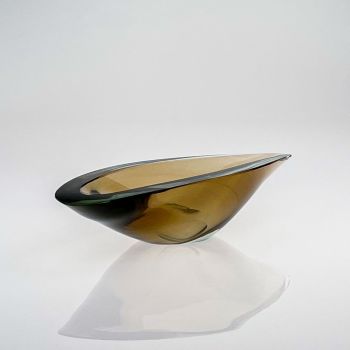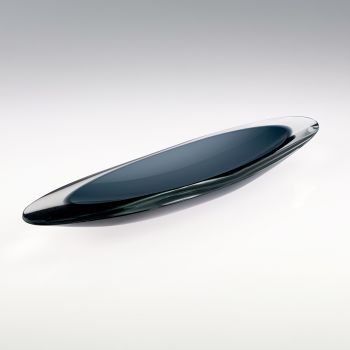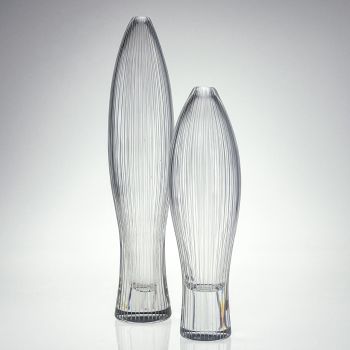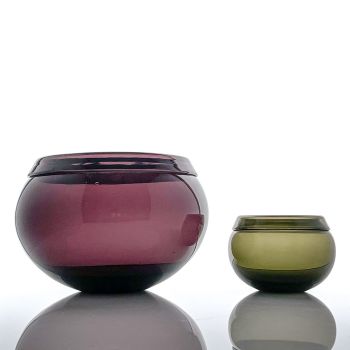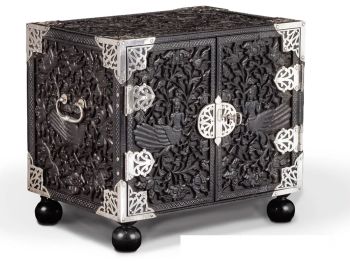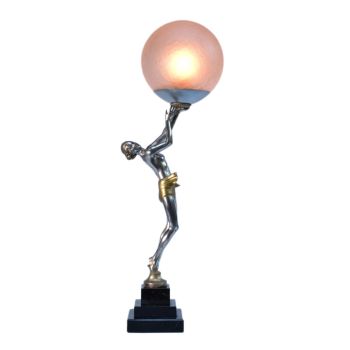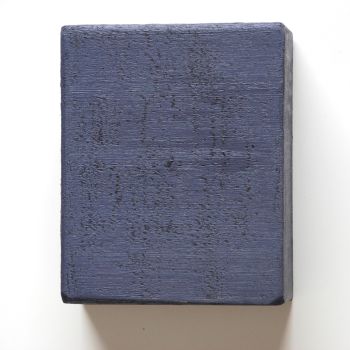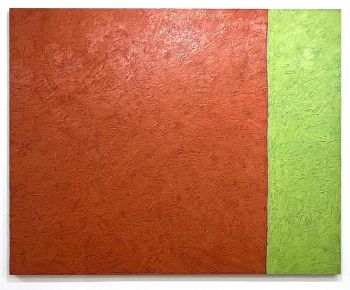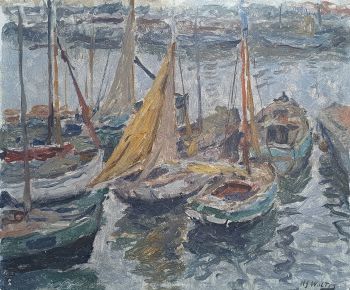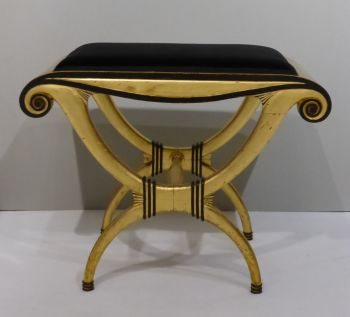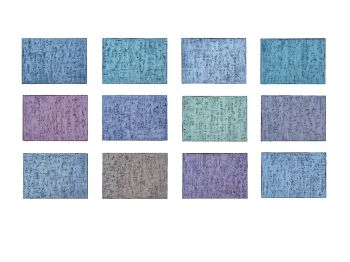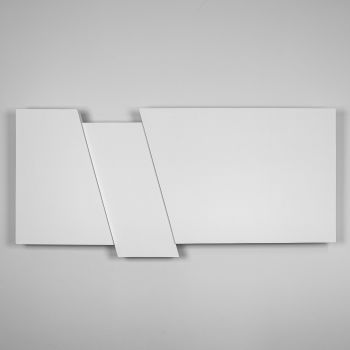A staved teakwood “Congo” icebucket – Dansk Designs, circa 1965 1960 - 1969
Jens Harald Quistgaard
BoisTeck
40 cm
ConditionVery good
€ 675
Van Kerkhoff Art
- Sur l'oeuvre d'artA staved teakwood “Congo” lidded icebucket with a black plastic inner liner. Designed by Jens Quistgaard in 1955 and produced for Dansk Designs probably in the late 1950’s or early 1960’s.
These icebuckets were made in three different size ranges, this being a middle sized example. These objects were made with great craftsmanship.
Strips of solid teakwood (staves) were joined together in a traditional way to form the final shape. The craftsmanship originates from the tubing of buckets and barrels and has been practised in Scandinavia since the middle ages.
The ice bucket is branded underneath the base: “four Ducks mark” – which identifies the bucket as an early production piece – Dansk Designs Denmark – JHQ (Jens Harald Quistgaard) and ©.
About Jens Harald Quistgaard
Jens Harald Quistgaard (Copenhagen 1919 – Vordingborg 2008) was a Danish wood-, metal- and glassware designer and sculptor, known principally for his work for the American company Dansk Designs, where he was chief designer from 1954 until 1983. Jens Harald Quistgaard grew up in an artistic family in Copenhagen. His father, Harald Quistgaard, tought him sculpting at a young age. He was educated as a drawer and silversmith at the technical school in Copenhagen. His apprenticeship he served at Georg Jensen Sølvsmidie.
After World War II Quistgaard set up his own design studio in Copenhagen. His breakthrough as an designer came in 1953–54, where he fashioned the cutlery set Fjord, the first cutlery set that combined stainless steel with handles of teak.
In 1954 was awarded the gold medal at the Triennale in Milan for a saucepan design. For two more reasons 1954 became a very important year for Quistgaard. He received the prestigious Lunning Price – informally called the “Nobel price for design” – and he started to work together with the American businessman Ted Nierenberg.
Together they founded the American company Dansk Designs with Quistgaard as chief designer. His designs were an immediate success in the USA and his designs were synonymous with modern living and Scandinavian style, consisting of clean lines, sculptural form and natural materials.
From the 1960’s onward his success in The united States was followed by success in Europe and Japan. Dansk Designs started their own shop in Copenhagen, in London and in Stockholm, and Quistgaard’s designs were exhibited and sold in Tokyo, Berlin, Paris, Zürich, Melbourne, Johannesburg and many other major cities.
Quistgaard remained chief designer for Dansk Designs until the 1980’s. In 1983 he moved to Rome and in 1993 he returned to Denmark.
His work is represented in many museums all over the world, among others: The Louvre, Paris; Designmuseum Danmark, Copenhagen; The British Museum, London; The MoMa, New York City and the National Museum, Stockholm.
Marked
Branded underneath the base:
"Four Ducks" Mark – Dansk Designs Denmark – JHQ (Jens Harald Quistgaard) and ©
Execution
made for Dansk Designs in Denmark, circa 1965
Condition
Good original condition, some minor scratches, stains and dents. Wear consistent of age and use.
Literature
Mel Byars – The Design Encyclopedia, p. 605-606
Dimensions
Height 40 cm - Sur l'artiste
Jens Harald Quistgaard (23 avril 1919 - 4 janvier 2008) était un designer danois surtout connu pour ses créations pour Dansk, où il a travaillé comme designer en chef du milieu des années 1950 aux années 1980. Au cours de sa carrière, Quistgaard a conçu plus de 4000 objets, apportant une contribution importante au design moderne.
Né à Copenhague le 23 avril 1919, Quistgaard grandit dans une famille d'artistes, où son père, Harald Quistgaard (1887-1979), était sculpteur et sa mère peintre. À l'âge de quatorze ans, Jens Harald Quistgaard a commencé à expérimenter la fabrication de bijoux et de couteaux. Après ses études à l'école technique, il fait son apprentissage auprès d'artisans renommés tels que Georg Jensen et Just Anderson.
Pendant la Seconde Guerre mondiale, Quistgaard a été actif dans la résistance danoise. Après la guerre, ses créations sont exposées dans diverses expositions en Europe et aux États-Unis.
Un tournant dans sa carrière survient avec la création du service de couverts « Fjord » en 1953, dans lequel Quistgaard associe le bois de teck à l'acier inoxydable. Le design a attiré l'attention de l'entrepreneur américain Ted Nierenberg, qui a approché Quistgaard avec une proposition de produire l'ensemble de couverts à grande échelle. C'est ainsi que Dansk International Designs est né en 1954, avec Quistgaard nommé designer en chef. La ménagère Fjord est introduite dans les magasins américains en 1956 et connaît rapidement un grand succès.
En plus des couverts, Quistgaard a également conçu une vaste collection de moulins à poivre, de saladiers et de planches à découper pour Dansk. Il était connu pour son utilisation du bois dans ses créations, notamment le bois de teck, mais aussi des bois plus exotiques comme le wengé, le cocobolo et le palissandre.
Quistgaard a reçu plusieurs prix prestigieux pour ses créations innovantes, notamment des médailles d'or et d'argent à la Triennale de Milan de 1954 et le prix Lunning. En 1958, il reçoit le prix Neimann Marcus. Quistgaard a continué à travailler chez Dansk jusqu'aux années 1980, où il a continuellement créé des designs innovants et intemporels.
L'héritage de Jens Harald Quistgaard se perpétue dans le monde du design, où ses créations intemporelles et fonctionnelles sont toujours appréciées des passionnés du monde entier. Son influence sur la communauté danoise et internationale du design restera dans les mémoires pour toujours.
Êtes-vous intéressé par l'achat de cette oeuvre?
Artwork details
Related artworks
- 1 - 4 / 24
Børge Mogensen
Teak wood “dropleaf” desk – Søborg Møbler, Denmark circa 19551950 - 1960
Prijs op aanvraagVan Kerkhoff Art
Onbekende Kunstenaar
A rare Japanese export lacquer medical instrument box1650 - 1700
Prijs op aanvraagZebregs & Röell - Fine Art - Antiques
Børge Mogensen
Teak wood “dropleaf” desk – Søborg Møbler, Denmark circa 19551950 - 1960
Prijs op aanvraagVan Kerkhoff Art
1 - 4 / 24Børge Mogensen
Teak wood “dropleaf” desk – Søborg Møbler, Denmark circa 19551950 - 1960
Prijs op aanvraagVan Kerkhoff Art
Peter Paul Rubens (circle of)
Portrait of a man dressed up as an oriental man1620 - 1630
Prijs op aanvraagGallerease Selected
1 - 4 / 24- 1 - 4 / 12















